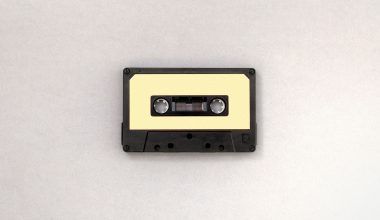If you’ve ever wondered what songs are public domain, you’re not alone. The concept can feel a little confusing, but it’s an important one to understand, especially if you’re looking for music you can use freely in your projects. In this guide, we’ll break down everything you need to know—in plain, easy-to-read language.
Understanding the Public Domain
First, let’s clarify what “public domain” means. When a song is in the public domain, it means it’s not protected by copyright anymore. This gives anyone the freedom to use the song without needing to ask for permission or pay licensing fees. Sounds amazing, right? But it’s not always straightforward.
Songs enter the public domain in a few ways. The most common reason is that the copyright has expired. In the United States, this usually happens 70 years after the death of the songwriter or composer. However, the rules can vary depending on the country.
Examples of Public Domain Songs
To give you a better idea, here are some songs that are well-known and in the public domain:
- “Happy Birthday to You” (after 2016, thanks to a court ruling)
- Traditional folk songs like “Amazing Grace” and “Auld Lang Syne”
- Classical compositions by composers like Bach, Beethoven, and Mozart
These songs can be used freely, but there’s a catch: only the original versions are public domain. If someone recorded a new version of “Amazing Grace,” that recording could still be copyrighted.
Why Are Some Songs Public Domain?
Songs become public domain primarily because of expired copyrights. But there are other reasons too. Sometimes, the creator intentionally releases their work into the public domain. This is often called “dedication,” and it’s a generous way for artists to give back to the community.
It’s also worth noting that works created before 1924 are generally public domain in the U.S. That’s why so many classic songs and compositions from the early 1900s are free to use.
How to Check If a Song Is Public Domain
Here’s the tricky part: not all old songs are public domain. To check, you’ll need to do a little research. Start by looking up the date of publication and the composer’s death year. There are also databases and websites specifically dedicated to public domain music, which can save you a lot of time.
The Difference Between Public Domain and Royalty-Free Music
People often confuse public domain song with royalty-free music, but they’re not the same. Public domain songs are free to use, no strings attached. Royalty-free music, on the other hand, usually requires a one-time payment or subscription. After that, you can use the music as much as you want. Both options are great, but knowing the difference is crucial.
Using Public Domain Songs Legally
While public domain songs are free to use, it’s still essential to be cautious. For example, if you’re using a song in a commercial project, make sure the arrangement or recording you’re using is also public domain. If it’s a modern recording of a public domain song, you may still need permission.
Popular Uses for Public Domain Songs
Public domain song are incredibly versatile. You can use them in:
- YouTube videos
- Podcasts
- Commercials
- Movies
- Live performances
Their flexibility makes them a favorite among creators looking for affordable music options.
Benefits of Public Domain Songs
Using public domain music has several advantages. First and foremost, it’s cost-effective. You don’t have to worry about paying for licenses or royalties. Plus, these songs are often timeless classics that audiences already know and love.
Another benefit is creative freedom. Since you’re not restricted by copyright laws, you can remix, rearrange, or adapt public domain song to suit your needs.
Challenges and Limitations
Of course, there are a few challenges to keep in mind. The biggest one is verifying whether a song is genuinely in the public domain. Mistakes can lead to legal trouble, so it’s always a good idea to double-check.
Another limitation is the selection. While there are plenty of classics in the public domain, you might not find exactly what you’re looking for. This is especially true if you’re after modern music.
Tips for Finding and Using Public Domain Songs
If you’re ready to dive in, here are some practical tips:
- Use reliable sources. Websites like the Public Domain Information Project or IMSLP can help you identify public domain song.
- Double-check the copyright. Always confirm the status of the song and any recordings you plan to use.
- Experiment creatively. Don’t be afraid to adapt or remix public domain song to make them your own.
Closing Thoughts
Public domain song are a fantastic resource for anyone looking to use music without breaking the bank. Whether you’re a content creator, musician, or business owner, understanding what songs are public domain opens up a world of possibilities. Just remember to do your homework and enjoy the creative freedom that comes with it!
Related Articles:
For further reading, explore these related articles:
- Circles Post Malone Lyrics – A Song About Love, Loss, and Life
- Billie Eilish’s Big Moment at the Oscars 2022: A Night to Remember
For additional resources on music marketing and distribution, visit DMT Records Pvt. Ltd..






